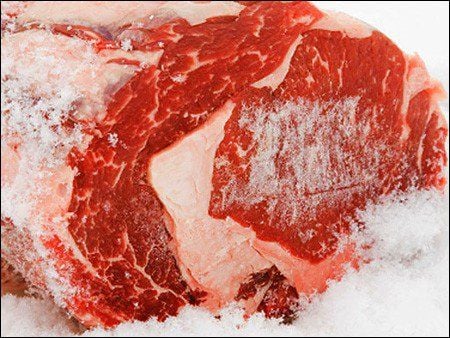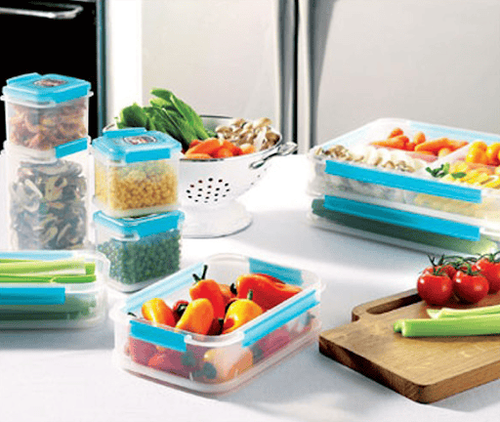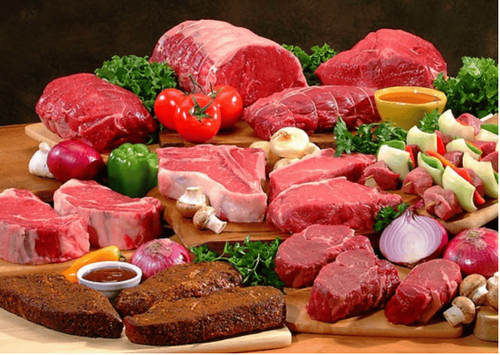This is an automatically translated article.
Leftovers from the previous meal should still be kept as it can be used as food for the next meal. The following article will give you tips on storing cooked foods in the refrigerator to prevent food poisoning.1. What foods can be stored in the refrigerator?
Some foods need to be kept in the refrigerator to slow the growth of germs and keep them fresh and safe for longer. They are foods that have a "use by" date and "keep cold" on the label, such as milk, meat, and prepared foods. Food needs to be cooled down before being refrigerated (usually within 2 hours), stored in the refrigerator and eaten within 2 days.Avoid keeping food in open tin cans in the refrigerator, as the food inside can develop a metallic taste. Follow manufacturer's instructions or place food in sealed containers or bowls before refrigerating.
2. Refrigerator maintenance
Keep your refrigerator temperature at 5C or lower.If the refrigerator has a digital temperature display, you should still test it with the temperature inside the refrigerator to make sure it is correct.
Clean and check the refrigerator regularly to ensure it is hygienic and in good working order.
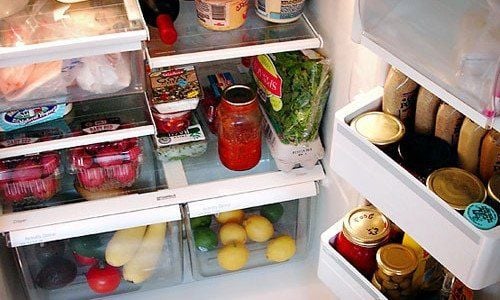
Luôn giữ tủ lạnh ở nhiệt độ là 5 độ C hoặc thấp hơn
3. Pay attention to the expiration date indicated on the food label
No food can last forever. Most prepackaged foods have a "best before" or "use by" date. Some short-term foods are often labeled with a "use by" label. It can be dangerous to eat foods past the expiration date stated on the label. Some foods with a longer shelf life are often labeled "best by date". They show how long the food will stay at its best.Although we can see that the color and smell of food is still good even after the "use by" date, that does not mean it is safe to eat. Because it can still contain elements that can cause disease. Eating food labeled "best first" isn't dangerous, but the food may not be of good quality.
4. Frozen food
Many foods can be frozen, including:Yogurt Cheese (except soft cheeses) Milk Meat Fish Eggs, including hard-boiled eggs Bananas: peel and wrap them or place in an airtight container before freezing Food toasting Rice Bread Anything with a high water content like strawberries and tomatoes will be runny but can still be used for cooking.
Put food in an airtight container or tightly wrap it in a freezer bag before placing it in the freezer to prevent cold air from drying it out.
5. Preserving eggs

Trứng được bảo quản tốt nhất trong tủ lạnh vì chúng được giữ ở nhiệt độ không đổi
Crack the eggs and separate the yolks and whites into separate plastic containers or food bags before freezing. This method is great for baking. Crack an egg and whip it before freezing – This method is great for omelettes and scrambled eggs Hard-boiled eggs can also be frozen. They can be safely stored in the refrigerator for several days.
6. Preservation of meat and poultry meat
It is important to store meat safely in the refrigerator to prevent bacteria from spreading and to avoid food poisoning.Raw meat and poultry should be stored in airtight containers and follow any storage instructions on the label and do not eat meat past its use-by date. Keep cooked meat separate from raw meat and ready-to-eat foods in general.
7. Freezing and defrosting meat and fish
Safe ways to store meat and fish in the refrigerator:Freeze anytime ahead of time Defrost meat and fish thoroughly before cooking. Lots of liquid will come out, so put it in a bowl to prevent bacteria in the liquid from spreading to other things. Defrost meat or fish in the microwave if it's urgent or can be defrosted in the refrigerator. overnight so as not to overheat. Make sure the meat is properly wrapped in the freezer or it could be frozen and inedible. Use food after defrosting within 24 hours and by the expiration date indicated on the label. You can freeze meat for a long time and it's still safe to eat, but the quality will degrade so it's best to eat it within 3 to 6 months. When using frozen meat for too long you can marinate before cooking to improve texture or use herbs and spices for added flavor.
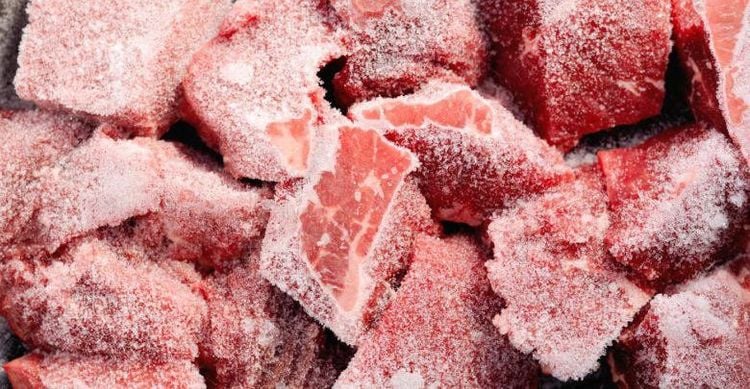
Rã đông thịt và cá thật kỹ trước khi nấu
8. Meat and fish
Never refreeze raw meat (including poultry) or fish after it has been defrosted. You can cook them then strain them again. You can reheat cooked meat and fish once, as long as they have been cooled before placing in the freezer.Raw frozen foods can be thawed once and stored in the refrigerator for up to 24 hours before they need to be cooked or thrown away.
To reduce waste, divide meals into portions before freezing and then simply defrost what you need.
9. Use leftovers
Do not throw away leftovers, as they can be used for the next meal. Follow these tips to get the most out of them:Leftovers are cooled as quickly as possible, ideally within 2 hours Divide leftovers into individual portions and refrigerate or freeze Use food leftovers in the refrigerator within 2 days When reheating food, make sure it is heated until it reaches 70°C in 2 minutes Always defrost leftovers completely in the refrigerator or in the microwave. When defrosting, food should only be reheated once, because the more you cool and reheat food, the higher the risk of food poisoning. Cooked food that has been frozen and removed from the refrigerator Frozen should be reheated and eaten within 24 hours of completely defrosting Foods stored in the freezer, such as ice cream and frozen desserts, should not be refrozen once they have thawed To be safe and reduce waste, take out of the freezer only what you plan to use within the next 24 hours
10. The truth about how to keep food safe
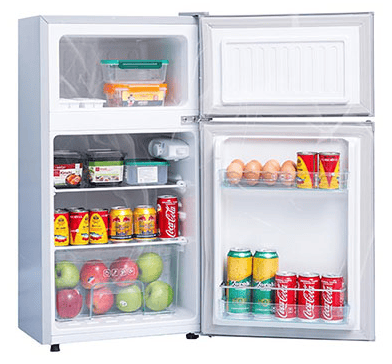
Để tránh ngộ độc thực phẩm, hãy vứt bỏ thực phẩm sau 3 đến 4 ngày trong tủ lạnh hoặc chuyển nó vào tủ đông
To kill dangerous bacteria, food should be reheated to 165F: The best way to know it has reached that temperature is with a food thermometer. Check in different places, especially the thickest or deepest part of the food, because dishes can cook unevenly. Don't use hot water to thaw frozen foods: Putting frozen foods in hot water or leaving them on the counter to thaw can make bacteria grow faster. Instead, thaw them in the refrigerator. It will take 24 hours to thaw every 1 to 5 pounds of food. If faster, place a leak-proof bag or container in a bowl of cold water, and replace the water every half hour. You can also defrost frozen leftovers in the microwave, oven, or stovetop. Frozen foods don't kill bacteria: Although freezing can slow the growth of bacteria, it doesn't kill them. When you defrost leftovers, bacteria can start to grow again and make you sick. That's why it's so important to reheat thawed leftovers the right way. Microwaves don't kill all bacteria: Microwaves cook food from the outside in, and they can still leave cold spots where bacteria can grow. For microwave safety, cover leftovers with a lid or vented plastic wrap. When it's halfway through, cook, stir, turn, or turn the food upside down. Let stand for a few minutes and place the thermometer in different places to check the temperature of the food. Set your refrigerator to 40 F or lower: Refrigerators that are too warm can lead to bacteria growth. freezer must be 0 F or lower. If the remote doesn't show the correct temperature, you may need a thermometer. And it is best to create a gap between the foods in the refrigerator so that cold air circulates and cools the food. Hot and cold foods before refrigerating: You don't have to wait until leftovers are at room temperature. You can put hot food directly into the refrigerator. A large amount, such as a pot of soup or a single chicken, can take too long to cool. If you want to chill them quickly, you can divide them into smaller portions into a leak-proof container in a large bowl of ice and some water. For people who reuse single-use plastic bags or use reusable bags, the spread of bacteria to ready-to-eat foods can be prevented by:
Packing raw food separately from ready-to-eat food . Keep only 1 or 2 reusable bags for raw foods only, do not use the same bags for ready-to-eat foods. Check the bag for holes, or make sure to clean it after each use. If not hygienic, the bag should be discarded. Cotton bags and canvas bags can be put in the washing machine.
Please dial HOTLINE for more information or register for an appointment HERE. Download MyVinmec app to make appointments faster and to manage your bookings easily.
Article reference source: nhs.uk, webmd.com






